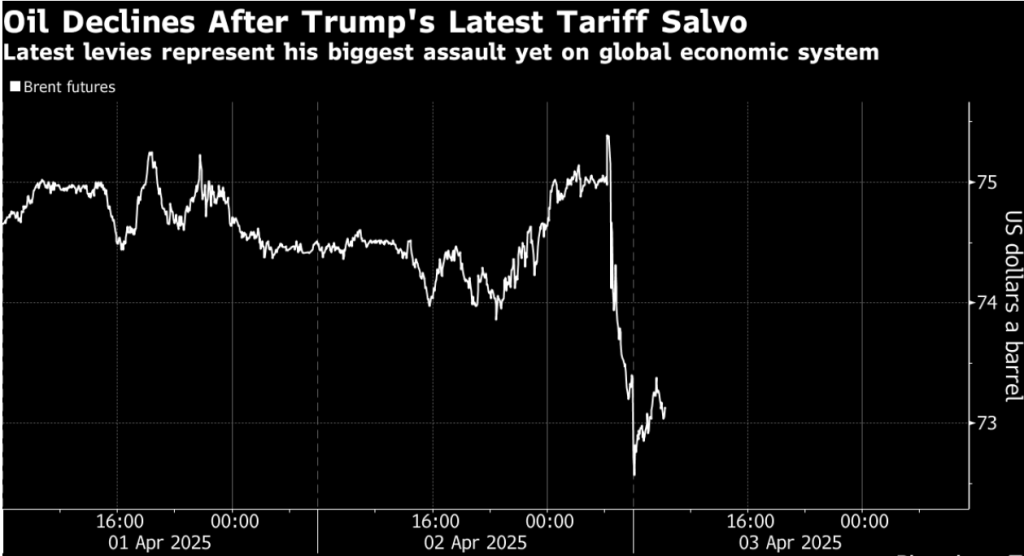- The crude oil prices tumbled amid the imposition of trade tariffs.
- China’s potential retaliation makes market participants perplexed.
- Inventory data came lower than expected, which may give a mild boost.
Crude oil prices became volatile after the US President announced trade tariffs on all imports, with a baseline of 10% or higher, affecting major trade partners. Market sentiment soured due to caution despite a tariff exemption on the oil imports. The major partners, including China and Europe, will be largely impacted, raising concerns about global economic growth and, consequently, global oil demand.
Brent crude saw a dip of 3.2%, trading around the mid-72 area, while WTI hovered near $70. The prices were largely driven by a fear of escalating trade wars that could reduce oil demand.

China, a major oil consumer, was hit with a 34% tariff on top of existing levies, while the EU faced a 20% duty. The aggressive trade policy has also sparked fears of retaliatory measures.
Moreover, geopolitical developments weigh on oil prices, as Trump’s policy toward oil suppliers like Russia and Iran has triggered uncertainty. The threat of Russian oil and sanctions on Iran could disrupt the global oil supply chains.
U.S. Crude Inventories and Rig Activity
Despite the geopolitics and trade tensions, the US crude oil inventory data added another layer of complexity to oil price fluctuations. Commercial crude oil inventories rose by 6.2 mn barrels while markets expected a decline. Inventories remain 4% under the 5-year average; this surprising build has weighed on the prices.
Meanwhile, the oil rig count decreased marginally, dropping by 1 to 592. A slight decrease in activity could potentially tighten the supply.

